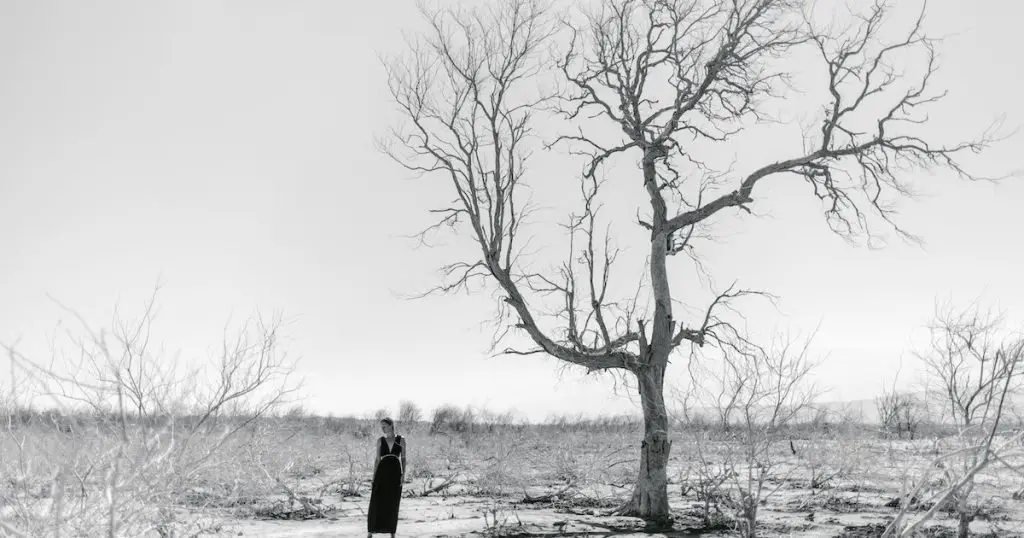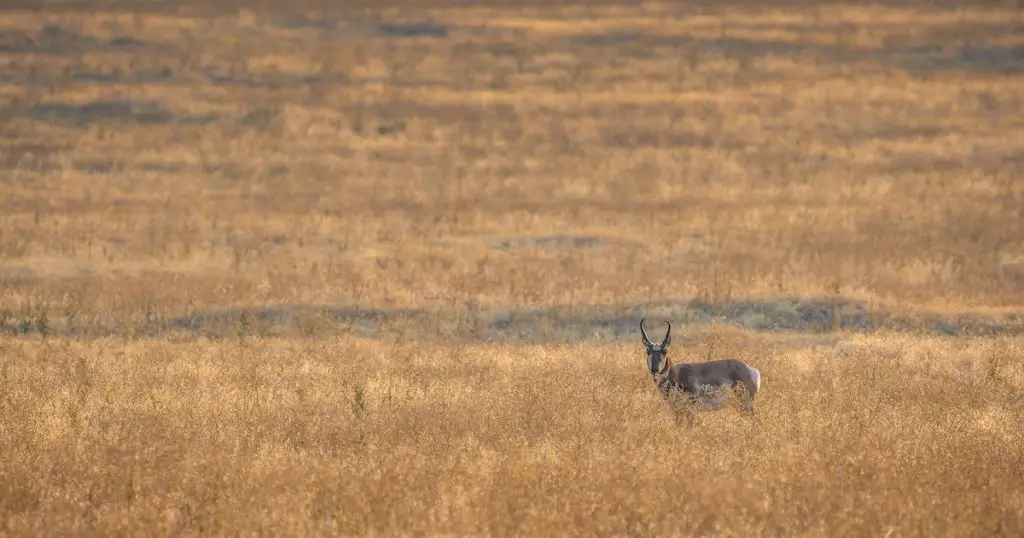Prescott, with its rich biodiversity, serves as an ecological gem in the heart of Arizona. However, like many places around the world, it faces the rising challenges posed by climate change.

This article delves deep into understanding how climate change affects Prescott’s flora and fauna. Through the lens of history, science, and firsthand observations, we will uncover the profound changes sweeping across our natural landscapes.
Historical Context
For centuries, Prescott’s ecosystem has evolved to create a delicate balance between its plants and animals. The symbiotic relationships, natural habitats, and cyclic phenomena have been shaped by past climatic conditions.
However, climate change isn’t a novel phenomenon. Our planet has seen several shifts in its climatic patterns, some of which have had significant impacts on Prescott’s ecological dynamics.
For example, the Ice Ages greatly influenced the distribution of certain species and paved the way for others. Yet, the current rate and magnitude of change, largely influenced by human activities, are unprecedented and alarming.
Climate Change
Temperature anomalies are no longer rare occurrences. As detailed in a report by the National Oceanic and Atmospheric Administration (NOAA), global temperatures have seen consistent rises over the past few decades. In Prescott, this has led to warmer summers and milder winters, affecting many temperature-sensitive species.
Meanwhile, changes in precipitation patterns have become a cause for concern. While some regions experience torrential rainfalls, others grapple with extended dry spells. These alterations have direct implications on Prescott’s vegetation and water resources.
Extreme weather events, which were once rare, are now becoming commonplace. From prolonged droughts to intense storms, the implications are far-reaching and often devastating for both plants and animals.
Impact on Prescott’s Flora
Prescott’s alpine and subalpine regions, characterized by unique plants adapted to cold climates, are under threat. Warming temperatures push these species to higher altitudes, but there’s only so high they can go.
On the other hand, invasive plant species, which previously couldn’t survive in Prescott’s conditions, are now finding it easier to spread. These invasive species, as highlighted by the National Invasive Species Information Center, often outcompete native plants, leading to reduced biodiversity.
Phenological changes are also apparent. Plants are now flowering and fruiting at different times compared to a few decades ago. This shift affects the entire food chain and disrupts many ecological processes.
Impact on Prescott’s Fauna
Animal species, especially migratory birds, are displaying altered patterns. Birds that used to migrate to cooler regions are now staying back, leading to increased competition for resources. Similarly, animals accustomed to cooler habitats find their homes shrinking.
A study published in the Journal of Animal Ecology indicates that changes in habitats are pushing some native species to the brink of extinction while paving the way for newcomers.
The phenological mismatches, such as birds arriving after their primary food source has peaked, are affecting breeding cycles and survival rates. Such disruptions have long-term implications on population dynamics.
How Flora Affects Fauna and Vice Versa
Nature thrives on interdependence. The flora of Prescott provides shelter and food for various fauna, and in return, many animals aid in pollination and seed dispersal.
However, the effects of climate change on one directly impact the other. A decline in a specific plant species due to drought can result in the decline of an animal species dependent on it.

On the flip side, changes in animal behavior or numbers can affect plant life. For instance, fewer pollinators can lead to reduced plant reproduction rates. These cascading effects can disrupt entire ecosystems and have consequences that are hard to predict.
Water Bodies and Wetlands
Prescott’s lakes, streams, and wetlands are silently bearing the brunt of climate change. Depleting water resources affects the myriad species that call these habitats home.
Fish populations, as documented by the World Wildlife Fund (WWF), are particularly vulnerable. Changes in water temperature and quality can result in decreased spawning and increased susceptibility to diseases.
Wetlands serve as breeding grounds for numerous amphibians and birds. The decline in these crucial habitats poses existential threats to these species, affecting the overall biodiversity of the region.
Economic and Human Dimensions
Prescott’s ecosystem isn’t just crucial for flora and fauna but also for the local economy and its people. Agriculture and forestry, sectors heavily reliant on predictable weather patterns, are facing challenges due to unexpected shifts.
Eco-tourism, a significant contributor to Prescott’s economy, is also feeling the heat. The charm of the region lies in its biodiversity. But as climate change alters the landscape, it threatens the very essence of what draws people to Prescott.
Nature’s Response
While the effects of climate change are undeniably challenging, nature has its ways of adapting and showing resilience. Some plants in Prescott have developed mechanisms to tolerate drought, using deep-rooted systems to extract water or altering their leaf structures.
Fauna, too, have showcased adaptability. Animals are shifting their behavioral patterns, habitats, and breeding timelines to cope with the changing environment. For instance, certain species are now seen breeding earlier in the year to take advantage of the availability of food.
Such instances of adaptation offer a ray of hope, emphasizing nature’s incredible capacity to adjust and endure, even in the face of adversity.
Mitigation and Conservation Efforts
Community initiatives in Prescott are making waves in combatting the impacts of climate change. Reforestation projects, coupled with conservation programs, are helping restore some of the lost green cover.

Efforts are also underway to create awareness and educate the masses about the importance of local biodiversity. Schools and institutions, with the help of organizations like the Nature Conservancy, are incorporating environmental studies into their curriculums.
On the conservation front:
- Establishment of protected zones to safeguard habitats.
- Breeding programs for species that are at risk.
- Monitoring and controlling the spread of invasive species.
Future Projections and Predictions
Based on current trends, the future of Prescott’s biodiversity is uncertain but not entirely bleak. Advanced modeling tools and studies, like those conducted by the Intergovernmental Panel on Climate Change (IPCC), predict a continuation of the current trajectory but also highlight potential new challenges.
There’s also a rising concern about ‘tipping points’ – thresholds beyond which recovery may become near-impossible. Hence, proactive measures and increased research are essential to mitigate the worst effects and safeguard Prescott’s rich ecological heritage.
FAQs:
In this section, we will be delving into some of the most common inquiries and curiosities that surround our topic.
What specific species in Prescott are most at risk due to climate change?
While many species face risks, alpine plants, certain migratory birds, and aquatic species in drying wetlands are among the most vulnerable.
How can the average citizen contribute to conservation efforts?
By supporting local conservation initiatives, reducing carbon footprints, and spreading awareness.
Are there any success stories of species recovering or adapting in Prescott?
certain species have shown remarkable adaptability, altering their breeding patterns or migrating to more suitable habitats.
How reliable are the future projections and models?
While models provide an educated guess based on current data, the exact future remains uncertain due to numerous variables.
Why is it crucial to address climate change’s effects on both flora and fauna simultaneously?
Because they’re interdependent. Changes to one invariably affect the other, leading to cascading impacts across the ecosystem.
Conclusion: How Climate Change Affects Prescott’s Flora and Fauna
In a world grappling with the realities of climate change, the fate of Prescott’s flora and fauna hangs in the balance. Understanding the multifaceted challenges, and more importantly, taking collective action is paramount.
It’s not just about preserving biodiversity but ensuring a sustainable future for generations to come. The responsibility lies with each one of us, as stewards of the planet, to champion the cause and protect the green and wild spirit of Prescott.



Leave a Comment
You must be logged in to post a comment.